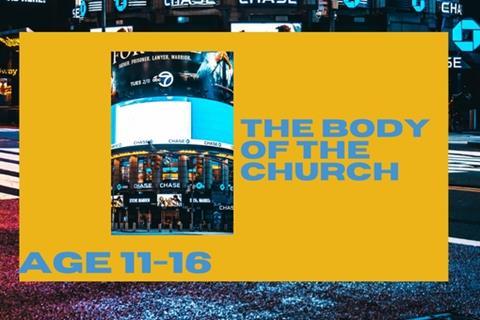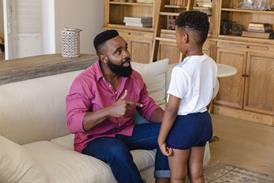
MEETING AIM: To understand that all Christians are not the same, but are equally important
BIBLE PASSAGE: 1 Corinthians 12:12-31
BACKGROUND: The church in Corinth was active, a little too active at times. It was a creative, spirit-led group of Christians. Yet, it needed guidance because it was making mistakes. In certain areas the church was growing freely but in others that freedom was causing issues. The church needed a little balancing out.
GATHERING TIME
Start by inviting the group to share what they have been doing during the past seven days. As they share, ask them if there was anything that happened that involved teamwork and working together? Or were there any sporting events where the teams worked well together, or not?
If appropriate you can explain that today you will be looking at how Paul encourages a church to use all its parts to work together.
INTRO ACTIVITY
You will need: pens and paper
Use the following questions as a quiz. All the questions are about body facts and figures. Split the group into teams or pairs. Let the teams confer and then write their answer down. When checking, the winning team will be the one closest to the answer.
- Approximately how many cells does an adult human have? Over 50 trillion
- The heart beats how many times in an average lifetime? 3 billion times
- What is the average percentage of human body weight from blood? 8%
- How many bones does a newborn baby have? 270
- How many bones does a human adult have? 206
- How many bones make up an adult foot? 26
- Researchers believe that the human eye can detect a candle flame up to what distance? 1.6 miles
- What part of the body contains the smallest bones? The ear
- Apart from hearing what is the other function of the whole ear? Balance
- How many bones make up the human skull? 22
BIBLE EXPLORATION
You will need: images of the body parts in the drama
Use the drama as an introduction to the Bible passage. Practise before the session or ask for volunteers on the day. Give each performer a picture of their body part.
Eye: I want out. I don’t want to be a part of this anymore. I don’t see the point of hanging around you guys. You have no vision.
Ear: I hear you, I hear what you’re saying. I’ve been listening to similar conversations and thoughts from others round here.
Eye: Really? Well, I didn’t see that coming.
I must have taken myself off the ball.
Ear: Yes, I overheard just the other day, just caught a snippet of a conversation from one of those body parts we don’t often look at and try not to hear.
Eye: Oh I see, or rather I didn’t, and I am quite glad I didn’t. That just adds to my reason for wanting out. It seems no part is happy here. It’s becoming a sight for sore eyes.
Hand: Well that is all well and good, but there are a couple of glaring issues
arising out of this. And, I’m not pointing the finger at anyone here. I’ve felt this sort of discontent before. Normally a quick slap pulls everyone back in line.
Foot: It’s ridiculous. I ought to stamp down on this right away. You all need a quick kick up the—
Hand: Interrupting before the foot can finish. Stop there, that sort of talk needs nipping in the bud.
Head: Oh, what twaddle. You’re not using your head. You need to use your nut for all of this. How can you, an eye, or ear, or foot or hand go it alone? Eye, how will you be able to hear anything? Foot, how will you be able to scratch an itch?
Eye: Ah, I didn’t see that.
Brain: Exactly, you need a brain for that sort of thing. It’s only because I was thinking about it that Head over there was able to say anything.
Mouth: Clearing their throat. Excuse me, but what’s more worrying is how you, an eyeball, an ear, a hand, a foot, a head and even a brain are able to talk without a mouth!
Ask for a volunteer to read the Bible passage 1 Corinthians 12:12–31. Explain that Paul is using a picture of a body to show that the Church is made up of all sorts of people with different abilities, levels of faith and understanding of what
being a follower of Jesus is.
Let the answer lead into ‘Chatting together’.
CHATTING TOGETHER
Use the following questions to continue your discussion about the Bible passage:
- What does Paul say holds all the different parts of the church together?
- What is holding your church and youth group together? Do the different parts of your church community stay apart?
- How can you be more involved in the church? How can you implement that as a group?
CREATIVE RESPONSE
You will need: large sheets of paper; art materials
Give out the paper and encourage the group to draw a simple outline of a human body. Using the art materials, ask them to highlight and draw in detail the areas that Paul mentions in the passage: the eye, the ear, the hand, the foot and the head.
As this is done talk to the group and discuss what holds the human body together? In reality the bones, blood, the lymphatic and nervous systems link the various parts and they are all held together with the skin.
As the group have discovered, Paul says that love holds the body of the church together. Invite the young people to illustrate the blank areas of their outlines with ways their church and their group can show love. In this context it means love in its broadest sense that includes kindness, support, friendship etc. What can you do to make this happen?
PRAYER
Finish the session with a simple prayer. You could use the words from the chorus ‘Bind us together’. Alternatively use the following:
Lord, hold this group together with love. Lord, bring this group closer together with the church through love.
Lord, hold our church together with love. Amen.
Supporting documents
Click link to download and view these files1024408.pdf
PDF, Size 0.44 mb






































